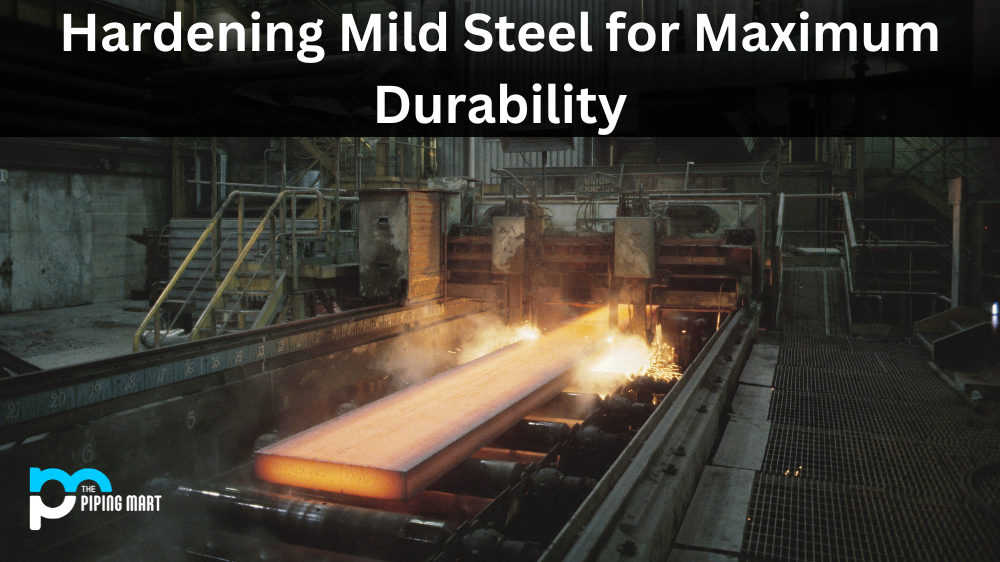Mild steel is an incredibly versatile material — it offers a range of uses and can be used for a variety of purposes. However, in order to make mild steel as strong and durable as possible, it must be hardened using a specific process. Read on to learn more about how to harden mild steel and get the most out of it.
Hardening Process
The process for hardening mild steel involves heat treatment — that is, heating the metal up to an exact temperature and then cooling it off at a controlled rate. This type of heat treatment is called “quenching” or “annealing,” depending on the desired result. In order to achieve maximum hardness, the metal should be heated until it glows red hot (1400-1600°F). Once heated, you can either plunge the metal into water or oil in order to cool it off quickly (quenching) or allow it to cool slowly by air (annealing). The quenching method will create a harder surface than the annealing method, but both methods can be used depending on your project’s needs.
Safety Considerations
It’s important to note that this process requires extreme temperatures, and caution must always be taken when working with high heats like these. Wear safety goggles and flame retardant clothing when dealing with these temperatures — if you don’t have access to proper protective gear, use indirect heat sources like kilns instead of open flames for added safety measures. Additionally, make sure that you have adequate ventilation when working with these high heats, as well as appropriate fire extinguishers nearby in case of emergency.
Aftercare
Once the metal is cooled off after hardening, there are still some steps that need to be taken in order to ensure maximum durability. The first step is tempering — this involves reheating the metal until it reaches around 500°F before cooling again at room temperature. This helps reduce any internal stresses which may have built up during the hardening process and adds extra strength to your finished product. Finally, inspect your metal for any signs of damage or weakness before using it in any applications where strength is key – cracks or defects could lead to catastrophic failure if not addressed properly beforehand!
How to harden mild steel
Hardening mild steel is an important process for many industrial and commercial applications. It can be used to increase the strength and durability of a variety of products, from everyday tools to large machines. To properly harden mild steel, the metal must be heated until it reaches sharpening or red-hot temperature (about 830 degrees Celsius). Once it has reached this temperate, it should then be immediately quenched in oil or water, depending on the desired consequence. The fast cooling forces the atoms in the material closer together creating a much harder surface than before. The exact timing and temperatures are very critical to achieving proper hardening results, as too little or too much heat can leave your material brittle or soft. With practice and patience, anyone can learn how to harden mild steel correctly and reap its benefits!
Conclusion
Hardening mild steel is essential if you want maximum durability from this versatile material. By following proper safety protocols and taking care aftercare measures such as tempering and inspecting your workpiece for defects, you’ll ensure that your project will last longer and perform better than ever before! With these tips in mind, now you’re ready to get started on your next project with confidence!

Pipingmart is a B2B portal that specializes in metal, industrial and piping items. Additionally, we share the latest information and information about materials, products and various types of grades to assist businesses that are involved in this business.




